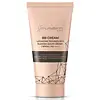What's inside
What's inside
 Key Ingredients
Key Ingredients

 Benefits
Benefits

 Concerns
Concerns

 Ingredients Side-by-side
Ingredients Side-by-side

Water
Skin ConditioningTitanium Dioxide
Cosmetic ColorantButylene Glycol
HumectantDicaprylyl Carbonate
EmollientSorbitan Olivate
EmulsifyingPotassium Cetyl Phosphate
EmulsifyingCetyl PEG/PPG-10/1 Dimethicone
EmulsifyingDimethicone
EmollientCyclopentasiloxane
EmollientCaprylyl Methicone
Skin ConditioningOctocrylene
UV AbsorberEthylhexyl Methoxycinnamate
UV AbsorberCera Alba
EmollientSilica
AbrasiveMica
Cosmetic ColorantCI 77492
Cosmetic ColorantEthylhexyl Salicylate
UV AbsorberButyl Methoxydibenzoylmethane
UV AbsorberBenzophenone-3
UV AbsorberCaprylyl Glycol
EmollientDimethicone Crosspolymer
Emulsion StabilisingPEG-12 Dimethicone/PPG-20 Crosspolymer
Polyglyceryl-10 Palmate
EmulsifyingPhospholipids
Skin ConditioningHelianthus Annuus Seed Oil
EmollientTriethoxycaprylylsilane
Allantoin
Skin ConditioningAlpha-Arbutin
AntioxidantCI 77491
Cosmetic ColorantTocopheryl Acetate
AntioxidantCI 77499
Cosmetic ColorantEucalyptus Globulus Leaf Oil
PerfumingSodium Hyaluronate
HumectantHydrogenated Polydecene
EmollientSodium Acrylates Copolymer
Glycerin
HumectantTetrasodium EDTA
Caprylhydroxamic Acid
1,2-Hexanediol
Skin ConditioningTropolone
Skin ConditioningWater, Titanium Dioxide, Butylene Glycol, Dicaprylyl Carbonate, Sorbitan Olivate, Potassium Cetyl Phosphate, Cetyl PEG/PPG-10/1 Dimethicone, Dimethicone, Cyclopentasiloxane, Caprylyl Methicone, Octocrylene, Ethylhexyl Methoxycinnamate, Cera Alba, Silica, Mica, CI 77492, Ethylhexyl Salicylate, Butyl Methoxydibenzoylmethane, Benzophenone-3, Caprylyl Glycol, Dimethicone Crosspolymer, PEG-12 Dimethicone/PPG-20 Crosspolymer, Polyglyceryl-10 Palmate, Phospholipids, Helianthus Annuus Seed Oil, Triethoxycaprylylsilane, Allantoin, Alpha-Arbutin, CI 77491, Tocopheryl Acetate, CI 77499, Eucalyptus Globulus Leaf Oil, Sodium Hyaluronate, Hydrogenated Polydecene, Sodium Acrylates Copolymer, Glycerin, Tetrasodium EDTA, Caprylhydroxamic Acid, 1,2-Hexanediol, Tropolone
Water
Skin ConditioningC12-15 Alkyl Benzoate
AntimicrobialDibutyl Adipate
EmollientButyl Methoxydibenzoylmethane
UV AbsorberDicaprylyl Carbonate
EmollientDicaprylyl Ether
EmollientTapioca Starch
Glycerin
HumectantPhenylbenzimidazole Sulfonic Acid
UV AbsorberBis-Ethylhexyloxyphenol Methoxyphenyl Triazine
Skin ConditioningEthylhexyl Triazone
UV AbsorberNiacinamide
SmoothingDiethylhexyl Butamido Triazone
UV AbsorberPentylene Glycol
Skin ConditioningUndecane
EmollientSodium Stearoyl Glutamate
CleansingCetyl Alcohol
EmollientGlyceryl Stearate
EmollientSodium Hyaluronate
HumectantTridecane
PerfumingCaprylyl Glycol
EmollientDecylene Glycol
Skin ConditioningEctoin
Skin ConditioningSodium Hydroxide
BufferingEthylhexylglycerin
Skin ConditioningTocopheryl Acetate
AntioxidantXanthan Gum
EmulsifyingMicrocrystalline Cellulose
AbsorbentCellulose Gum
Emulsion StabilisingWater, C12-15 Alkyl Benzoate, Dibutyl Adipate, Butyl Methoxydibenzoylmethane, Dicaprylyl Carbonate, Dicaprylyl Ether, Tapioca Starch, Glycerin, Phenylbenzimidazole Sulfonic Acid, Bis-Ethylhexyloxyphenol Methoxyphenyl Triazine, Ethylhexyl Triazone, Niacinamide, Diethylhexyl Butamido Triazone, Pentylene Glycol, Undecane, Sodium Stearoyl Glutamate, Cetyl Alcohol, Glyceryl Stearate, Sodium Hyaluronate, Tridecane, Caprylyl Glycol, Decylene Glycol, Ectoin, Sodium Hydroxide, Ethylhexylglycerin, Tocopheryl Acetate, Xanthan Gum, Microcrystalline Cellulose, Cellulose Gum
Ingredients Explained
These ingredients are found in both products.
Ingredients higher up in an ingredient list are typically present in a larger amount.
Also known as Avobenzone, this ingredient is a chemical sunscreen filter that provides protection in the UV-A range.
Avobenzone is globally approved and is the most commonly used UV-A filter in the world.
Studies have found that avobenzone becomes ineffective when exposed to UV light (it is not photostable; meaning that it breaks down in sunlight). Because of this, formulations that include avobenzone will usually contain stabilizers such as octocrylene.
However, some modern formulations (looking at you, EU!) are able to stabilize avobenzone by coating the molecules.
Avobenzone does not protect against the UV-B range, so it's important to check that the sunscreen you're using contains other UV filters that do!
The highest concentration of avobenzone permitted is 3% in the US, and 5% in the EU.
Learn more about Butyl MethoxydibenzoylmethaneCaprylyl Glycol is a humectant and emollient, meaning it attracts and preserves moisture.
It is a common ingredient in many products, especially those designed to hydrate skin. The primary benefits are retaining moisture, skin softening, and promoting a healthy skin barrier.
Though Caprylyl Glycol is an alcohol derived from fatty acids, it is not the kind that can dry out skin.
This ingredient is also used as a preservative to extend the life of products. It has slight antimicrobial properties.
Learn more about Caprylyl GlycolDicaprylyl Carbonate comes from carbonic acid and caprylyl alcohol, a fatty alcohol. It is an emollient and gives skin a velvet feel. The sources of Dicaprylyl Carbonate may be synthetic or from animals.
As an emollient, Dicaprylyl Carbonate creates a film on the skin. This film traps moisture in, keeping your skin soft and hydrated.
Glycerin is already naturally found in your skin. It helps moisturize and protect your skin.
A study from 2016 found glycerin to be more effective as a humectant than AHAs and hyaluronic acid.
As a humectant, it helps the skin stay hydrated by pulling moisture to your skin. The low molecular weight of glycerin allows it to pull moisture into the deeper layers of your skin.
Hydrated skin improves your skin barrier; Your skin barrier helps protect against irritants and bacteria.
Glycerin has also been found to have antimicrobial and antiviral properties. Due to these properties, glycerin is often used in wound and burn treatments.
In cosmetics, glycerin is usually derived from plants such as soybean or palm. However, it can also be sourced from animals, such as tallow or animal fat.
This ingredient is organic, colorless, odorless, and non-toxic.
Glycerin is the name for this ingredient in American English. British English uses Glycerol/Glycerine.
Learn more about GlycerinSodium Hyaluronate is hyaluronic acid's salt form. It is commonly derived from the sodium salt of hyaluronic acid.
Like hyaluronic acid, it is great at holding water and acts as a humectant. This makes it a great skin hydrating ingredient.
Sodium Hyaluronate is naturally occurring in our bodies and is mostly found in eye fluid and joints.
These are some other common types of Hyaluronic Acid:
Learn more about Sodium HyaluronateTocopheryl Acetate is AKA Vitamin E. It is an antioxidant and protects your skin from free radicals. Free radicals damage the skin by breaking down collagen.
One study found using Tocopheryl Acetate with Vitamin C decreased the number of sunburned cells.
Tocopheryl Acetate is commonly found in both skincare and dietary supplements.
Learn more about Tocopheryl AcetateWater. It's the most common cosmetic ingredient of all. You'll usually see it at the top of ingredient lists, meaning that it makes up the largest part of the product.
So why is it so popular? Water most often acts as a solvent - this means that it helps dissolve other ingredients into the formulation.
You'll also recognize water as that liquid we all need to stay alive. If you see this, drink a glass of water. Stay hydrated!
Learn more about Water